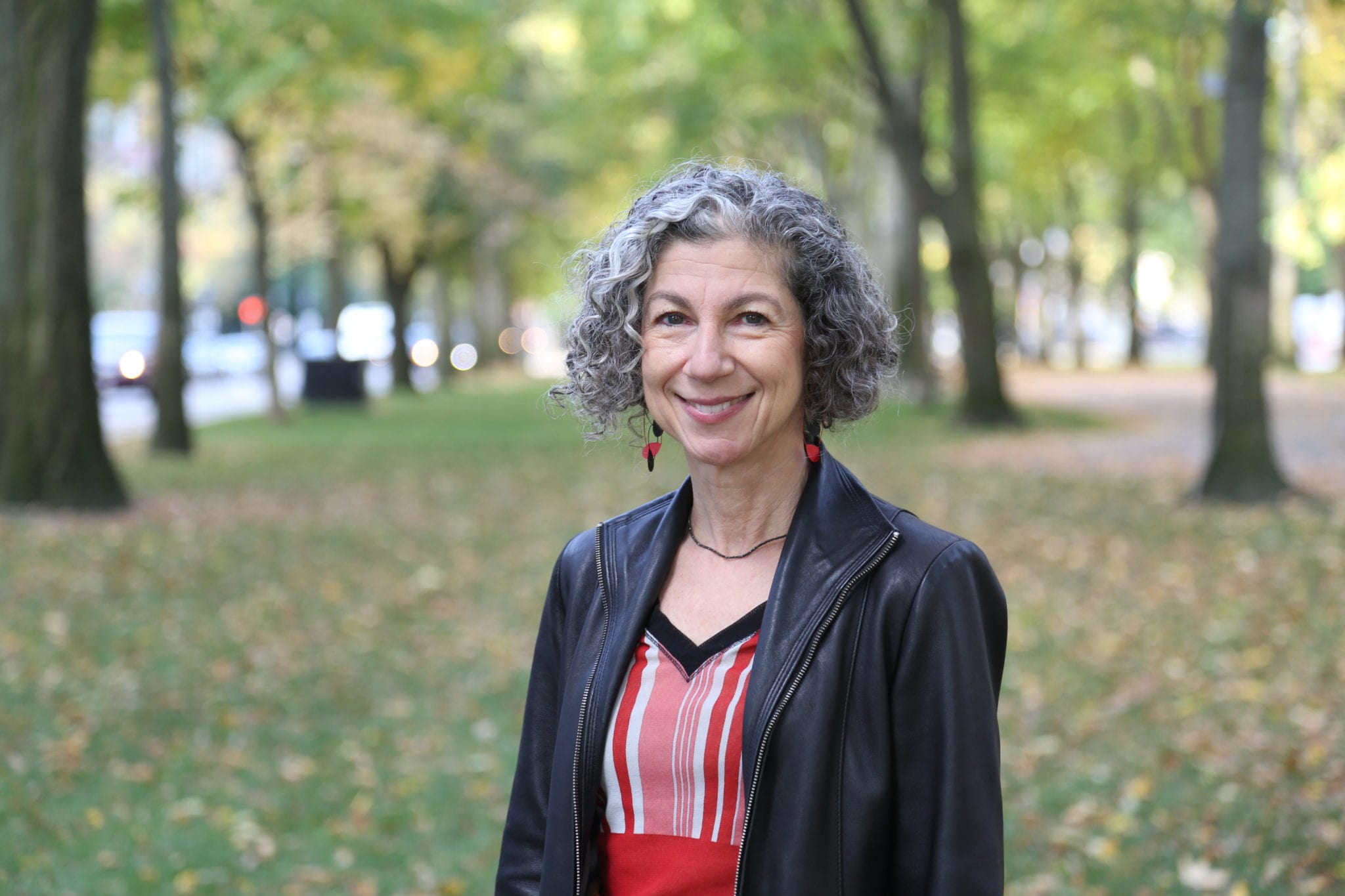
By Claudia Acevedo
Virtual Launch Event: Quail Ridge Books, Friday, November 20, 7pm EDT, with Virginia Holman. Register here.
 When author and psychiatrist Doris Iarovici wrote what would ultimately become her second short story collection, Minus One (University of Wisconsin Press), the country seemed different. We now know that what we see happening around us, however, had simply been bubbling up. This book, filled with people from all walks of life, with challenging jobs, with familial problems, with health issues, some separated from their families, all have something that is bubbling up to the surface, despite their brave facades. Most relevantly, they all have a thread running through them: an absence they must live with and hopefully find their way through, despite the fear, pain, or anxiety that could rear its head at any point. All of us have experienced loss, and even if some of us say we haven’t, we have no choice but to confront it now and continue to be there for ourselves and each other, like many of Iarovici’s characters. In my correspondence with the author over the last couple of weeks, some of which is below, she shared her thoughts on the difficulty of creating during this moment in time, as well as some of her own experiences with loss and the ways in which her life and career have informed her writing.
When author and psychiatrist Doris Iarovici wrote what would ultimately become her second short story collection, Minus One (University of Wisconsin Press), the country seemed different. We now know that what we see happening around us, however, had simply been bubbling up. This book, filled with people from all walks of life, with challenging jobs, with familial problems, with health issues, some separated from their families, all have something that is bubbling up to the surface, despite their brave facades. Most relevantly, they all have a thread running through them: an absence they must live with and hopefully find their way through, despite the fear, pain, or anxiety that could rear its head at any point. All of us have experienced loss, and even if some of us say we haven’t, we have no choice but to confront it now and continue to be there for ourselves and each other, like many of Iarovici’s characters. In my correspondence with the author over the last couple of weeks, some of which is below, she shared her thoughts on the difficulty of creating during this moment in time, as well as some of her own experiences with loss and the ways in which her life and career have informed her writing.
1) When did you start writing? What, specifically, drew you to write Minus One when you did?
As soon as I learned to write, I wrote my own stories. Before I could write, I told stories aloud, to entertain family and kids in my preschool class. I didn’t set out to write Minus One, and in fact was working on a novel when the stories that became this book began to clamor for my attention. Having been widowed young, I initially avoided writing about grief and loss, thinking I needed a break from these painful feelings. But loss is inevitable and universal, and when it found its way into my work I became increasingly interested in the ways our experiences of loss unite us, or can divide us. Seven or so years after my husband’s death, navigating a new relationship, I was suddenly writing both fiction and non-fiction about grief, including an essay that ultimately became a Modern Love column in the New York Times. I also wanted to explore resilience, and the forces that buoy us after loss.
I hope my stories validate the idea that there are many normal responses to grief, and that connection—even when we don’t feel like it, even via video knowing this falls far short of physical closeness, even when it’s imperfect—can provide an antidote to deep anxiety.
2) There is an undeniable medical/scientific thread running through the lives of many of your main characters, particularly those identifying as women. We encounter psychiatrists, pathologists, residents. Their careers tend to either define them or become an integral part of the telling of their stories. Could you talk a bit about this choice?
In a lot of traditional fiction, as in more traditional societies, there are familiar binaries: the men get to have careers and relationships, while the women are defined by relationships. I like to hope we’ve moved beyond that in life as well as literature: that people who identify as women or men or elsewhere on a continuum can have a variety of fulfilling careers, while also enjoying relationships, with all their attendant complexity and potential for loss or disruption or great joy.
3) In addition to the career themes, I noticed the detail with which disease and ageing (menopause, alcoholism, other types of addiction, MS, etc.) were treated. In which other ways would you say your work in medicine has influenced your writing?
My training as a physician definitely informs my fiction. As a psychiatrist I was trained to listen with curiosity and without judgement, a good skill for writing too. Yet certain illnesses remain taboo in literature, or else are treated with less compassion. For example, as a psychiatrist I’ve treated young adults struggling with addiction who also are amazing, kind, talented people, who shatter our cultural stereotypes about “addicts.” I hope my stories likewise shatter—or at least challenge—common misconceptions about living with illness. About aging too.
4) There is a beautiful section from “Afterlife” in which the speaker describes how she used the painting of petals and stems to extract “something special, unique: a new way of seeing.” While there is something scientific about this, it’s also incredibly poetic. In fact, when the women aren’t in the medical field in your stories, they tend to be artists or editors/writers. Could you talk a little bit about the influential artists and poets in your life?
I’ve been influenced by more poets than I can name, but there are a few poets whose work I turn to again and again when I’m stuck in my own writing and need a creative re-charge. When I go to writing residencies I always bring along Jane Hirshfield’s “Given Sugar, Given Salt,” as well as Elizabeth Bishop’s collected poems. I admire their ability to evoke emotion with spare language. More recently, I’ve been reading Wendell Berry and Mary Oliver. I was raised on a diet of weekend trips to the Museum of Modern Art in New York City, along with other museums, and have been especially inspired by artists who not only persist in making art over a lifetime, but whose work changes in exciting ways as they age—for example, Picasso, or Georgia O’Keefe, or David Hockney. More recently, I’ve met talented contemporary artists and poets at residencies – such as Leah Dyjak, whose beautiful work graces my cover – and I learn so much from watching their process.
5) The relationship between immigration, class, the striving for achievement or the “American Dream” comes up often. Women having to build or rebuild their lives far from home. Is this something you have witnessed firsthand?
As an immigrant myself, I experienced the journey that many immigrants face, including discrimination and poverty. But my parents were educated and white and our hard work bore fruit. I had the good fortune to attend excellent public schools in New York City, where many of my friends and classmates were also immigrants. Many of us believed whole-heartedly in the “American Dream,” but as I’ve gotten older I’m appalled to see that realization of the dream is not available to all immigrants (or even to all birthright US citizens). In my first short story collection, “American Dreaming,” I wrote about the ways that class and race and immigrant background can hobble a person’s chances at building or rebuilding their life.
6) What do you want your readers in this time of deep anxiety and isolation to take from this book?
Anxiety and isolation take their toll on us all, and more so on those who’ve had a recent significant loss. I hope my stories validate the idea that there are many normal responses to grief, and that connection—even when we don’t feel like it, even via video knowing this falls far short of physical closeness, even when it’s imperfect—can provide an antidote to deep anxiety. Also—art helps, whether it’s visual art or writing or music, or other forms of creative expression. My character in “Small Talk” finds a way to fight his anxiety and isolation—pre-pandemic—through engaging in a creative meal plan. I hope the stories will spark conversations with ourselves and with each other about how to endure—and emerge from—grief and how to cultivate hope.
I like to hope we’ve moved beyond that in life as well as literature: that people who identify as women or men or elsewhere on a continuum can have a variety of fulfilling careers, while also enjoying relationships, with all their attendant complexity and potential for loss or disruption or great joy.
7) If you had written this book during the ongoing pandemic, wildfires, and BLM protests, how would it have changed it, if at all? I am thinking specifically about “Non-Native Species,” but if anything else comes to mind, please feel free to share.
2020 has been a very difficult, dark year. The pandemic is a new and unexpected misery, but in some ways, more terrifying is the thought that we humans are contributing to its continuation and exacerbating old miseries that are within our powers to improve: racial injustice, climate change. I’ve found it difficult to write creatively during 2020, because fiction pales before the sense of unreality that I’ve experienced watching failures of leadership and of compassion. But I’ve also felt a growing sense that now is the time to dive in and take risks in the writing, because exposing injustice and ignorance matters more than ever. In writing “Non-Native Species” I was trying to capture characters who had long tolerated painful behavior, from neglect to even abuse, and the urge to resist was simmering, simmering, til it boiled over. My character resists in subtle, contained ways. But from the perspective of 2020, subtle resistance to injustice or to disavowal of clear scientific evidence seems inadequate. The natural world itself is aflame, showing us that we must act decisively to save one another if we want to save ourselves.
Doris Iarovici grew up in New York City after arriving there at age 5 from Romania. She began writing shortly thereafter, and first published poetry and essays in Seventeen Magazine as a teenager. A graduate of Yale College and the Yale University School of Medicine, she has since divided her time between writing and medicine, and has published both fiction and non-fiction. She has been awarded writing fellowships from the Djerassi Resident Artists’ Program in California, Virginia Center for the Creative Arts in Virginia, Hambidge Center in Georgia, and the North Carolina Arts Council. She works as a psychiatrist at Harvard University, and lives in Boston.
